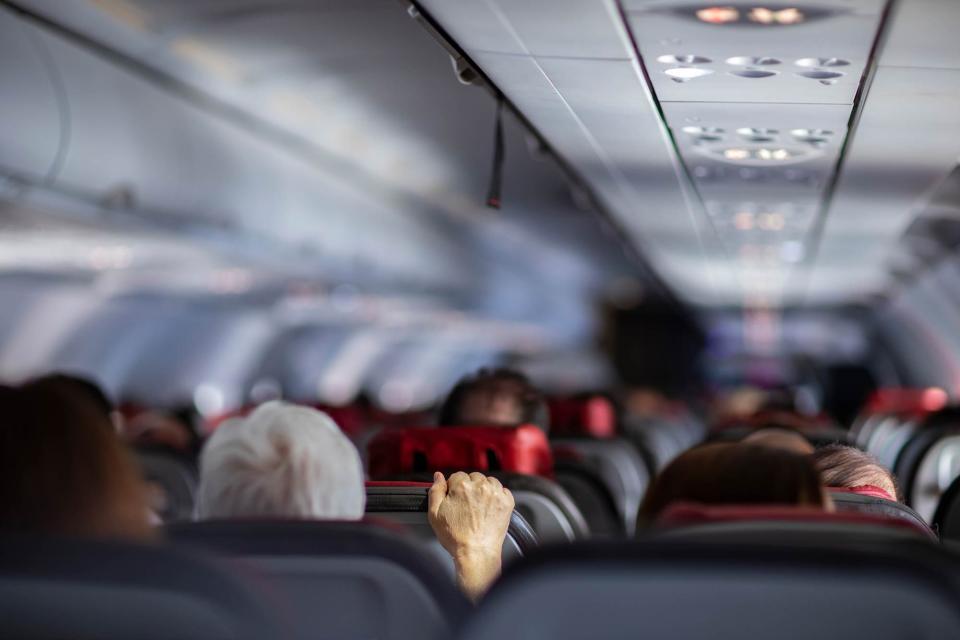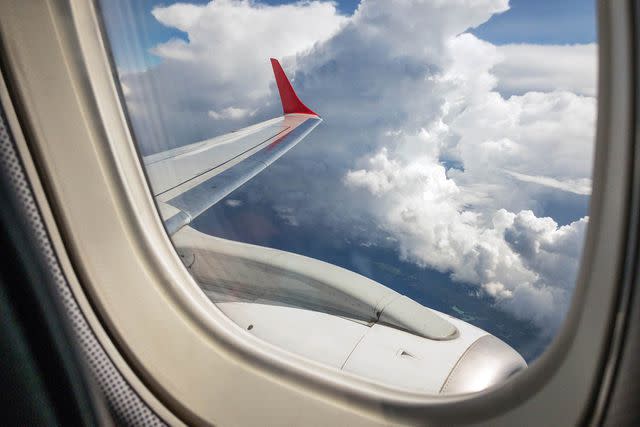How to Deal With Turbulence Anxiety, According to Experts
If you have turbulence anxiety, you’re not alone. Here are our best tips for dealing with it.

Ranimiro Lotufo Neto/Getty Images
If turbulence makes you nervous, you're certainly not alone. It's one of the many triggers of aviophobia, or the fear of flying. Aviophobia isn't particularly well studied, but a 2015 Economist/YouGov poll revealed that 40 percent of Americans are "bothered slightly" by flying in an airplane, while 15 percent are afraid.
"I've never met anyone who likes turbulence, and surprise turbulence is even worse for those with anxiety about it," David Rimmer, CEO at AB Aviation Group, tells Travel + Leisure. Rimmer is not only a plane safety advocate but also a survivor of a midair plane collision. While turbulence tends to be a concern for nervous fliers, it poses very little threat to the safety of contemporary planes.
Here's everything you need to know to help manage your turbulence anxiety.
David Rimmer is CEO at AB Aviation Group, an airplane safety advocate, and a survivor of a 2006 midair plane collision.
Mark Debus is a licensed clinical social worker and the clinical manager of behavioral health services at Sedgwick.
Understanding Turbulence
Turbulence, which pilots sometimes refer to as "rough air," is simply the air moving in an unusual, unexpected, or chaotic way. This can be caused by a variety of phenomena, from thunderstorms to changes in air pressure to air moving up and around mountains — and it can happen when conditions look to be completely clear.
Turbulence is typically categorized by four levels of severity, according to the National Weather Service: light, moderate, severe, and extreme. Light turbulence is the most common, and in a commercial aircraft, it's only felt as slight bumps or wobbles. Moderate turbulence is significantly rarer, and this type of turbulence can be a little sharper, to the point your drink might spill.
Severe turbulence is very rare, but when encountered, it could injure passengers or crew who are not buckled into their seats — this is the kind of turbulence that often makes the rounds on social media. Extreme turbulence is almost never experienced, but when it is encountered, it causes violent motion within the cabin and loss of control of the aircraft. That said, severe turbulence is most frequently encountered around severe thunderstorms, which aircraft now avoid thanks to advanced weather forecasting technology.
While turbulence can strike unexpectedly, pilots are in communication with one another in the air. If someone experiences turbulence, the message is relayed to anyone flying behind them, allowing other aircraft to alter their course to find smoother air, often at a slightly different altitude. If turbulence is unavoidable, the captain will ask passengers and flight attendants to buckle up.
Of course, that method isn't necessarily foolproof, which is why pilots (and air traffic controllers) also analyze weather reports and radar data during a flight. Plus, more advanced detection systems are under development. NASA, the National Center for Atmospheric Research (NCAR), and the University of Wisconsin, for example, are developing a program that uses satellite data, computer weather models, and artificial intelligence to better predict areas of turbulence.
Related: 33 Tips for Making a Long-haul Flight More Comfortable

Tommaso Tuzj/Getty Images
Turbulence and Safety
Turbulence has never been the sole factor in a plane crash, though in the earlier days of aviation, it was much more of a threat than it is today. Aircraft are designed to handle light and even moderate turbulence with ease, just as a car is designed to handle bumpy roads or a boat is designed to handle choppy seas.
While you don't need to worry about the structural components of the aircraft, you should worry about your own safety inside the plane during turbulence. According to the Federal Aviation Administration (FAA), 163 people have been severely injured due to turbulence between 2009 and 2022, with 129 of them being crew. "The most prevalent and severe inflight injuries while flying are suffered by flight attendants because they spend the least amount of time seated and buckled," says Rimmer. He advises that passengers "stay seated as much as you can, always buckle your seatbelt, and never stand when the seat belt sign is on" to prevent turbulence-related injuries.
Related: These Are the Safest Seats on an Airplane, According to Aviation Experts
Strategies for Coping with Turbulence Anxiety
If the thought of turbulence induces anxiety in you, here are some steps you can take before and during your flight to allay your concerns.
Choose your seat wisely.
Avoid sitting in the back of the plane. "Turbulence will be much more extreme in the back — including bumps and side-to-side, or yaw," says Rimmer.
Listen to your pilots.
Most pilots will give passengers a weather rundown before takeoff, so listen up to any announcements being made over the PA while boarding. Once you're in flight, always heed the warnings of the flight crew when it comes to turbulence — remain seated and buckled when advised.
Practice grounding techniques.
"Grounding techniques are some of the most beneficial tactics for easing anxiety as they allow you to focus on your body and less on the thoughts in your head," Mark Debus, a clinical manager of behavioral health services and licensed clinical social worker, tells T+L. "For this, you’ll want to engage as many senses as possible: sight, touch, smell, and hearing." He advises focusing on an object in front of you, such as a curtain or an exit sign, then lightly touching something solid, such as an armrest. While doing so, see if you can smell anything around you, from snacks to a passenger's perfume. Then listen to any conversation around you, taking note of tone more than words.
You can also use repetitive breathwork to ground yourself. "Alongside serving as a reminder to breathe, rhythmic breathing can have a calming effect on the body, where the person will usually start feeling calmer within 30 seconds of starting the exercise," says Debus. He advocates the 3-3-3 method: "First, you breathe in through the nose slowly for three seconds, hold your breath for a count of three, breathe out of your mouth for a count of three, wait for a count of three, then repeat."
If you have a nervous seat mate, strike up a light conversation with them.
Chatting with a neighbor can help distract both of you from turbulence. "One of the benefits of helping someone else is that it also helps with the immediacy of your own anxiety," says Debus. If your seatmate is a stranger, introduce yourself in a calming voice. "Perhaps talk about your travel destination. Ask them what they plan to do upon arrival. Ask if they have a pet or kids," says Debus. "If you find they’re not ready to talk, tell them about yourself and your plans. This allows them to focus on your voice and pay attention to something other than the turbulence."
For more Travel & Leisure news, make sure to sign up for our newsletter!
Read the original article on Travel & Leisure.

